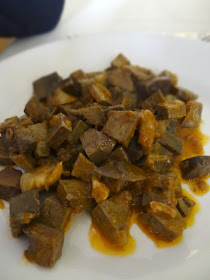The capital of Umbria, Perugia is a spectacular and enchanting hilltop town with a compact historic centre and rambling maze of charming medieval streets, exceptional museums and unique archeological treasures. Overlooking the verdant Tiber Valley, the city was originally founded by the Etruscans, but walking through the city one also feels the strong imprint of Roman, Medieval and Renaissance influences, testimony to the historical, artistic and cultural wealth of Perugia's unique rich and colourful past.
Fontana Maggiore in the centre of Perugia's Piazza IV Novembre
At the centre of Perugia is Piazza IV Novembre, considered one of the most beautiful squares in Italy. Surrounded by the Palazzo dei Priori and the Cathedral of San Lorenzo, the heart of Piazza IV Novembre is actually Fontana Maggiore, a beautiful medieval fountain that was built in the 12th century, which brought water to the town from Mount Pacciano through an extensive aqueduct, an astounding feat of its time. The fountain is composed of two marble polygonal basins, representing biblical, secular and mythological motifs, and one of the best examples of Gothic art found anywhere in Italy.
Fontana Maggiore with the Duomo San Lorenzo in the background
Extraordinary architectural features are around every corner in Perugia
On the other side of the square is the Palazzo dei Priori, which houses the National Gallery of Umbria, the most richest and most important art collections in Umbria, including masterpieces from the Middle Ages and Renaissance with works by Arnolfo di Cambio, Nicola and Giovanni Pisano, Duccio di Boninsegna, Gentile da Fabriano, Beato Angelico, and Piero della Francesca, with considerable amount of space dedicated to the Umbrian artists Benedetto Bonfigli, Bartolomeo Caporali, Fiorenzo di Lorenzo and especially renowned paintings by local favourite Perugino, who famously taught Raphael.
Palazzo del Priori which houses the National Gallery of Umbria and Sala dei Notari
The grand entry to the National Gallery of Umbria, housed in the Palazzo dei Priori
Perugino's Adoration of the Magi at the National Gallery of Umbria
The vibrant frescoes in the Sala dei Notari
There's perhaps no better archeological proof of Perugia's Etruscan roots than its Pozzo Etrusco, or Etruscan well, which supplied the whole of the city with water in Etruscan times. Also called the Sorbello Well, named after the noble family that owned the palace overhead, the well is an extraordinary feat of hydraulic engineering, dating back to the second half of the 3rd century, it's a testament to Perugia's highly advanced civilization at the time.
Perugia's Pozzo Etrusco - a 3rd century BC hydraulic well!
The original staircase, wet and slippery, that leads to the bottom of the well
Emerging from the dank and dark recesses of Pozzo Etrusco, we felt it was time to make our way to Ristorante Fontanella di Porta Sole, a small family run restaurant off the main Palazzo, serving 'cucina tipica Perugina' — typical Perugian cuisine. Run by chef and owner Gino Gianantoni, a friendly and charismatic character, Gino dons an apron and doubles and chef, server and Maitre D', in the restaurant his parents started way back in 1940, serving delicious home cooked traditional specialties typical of the city. Dishes such as 'mbrecciata, Quadrucci e Ceci and Creme di Fave, a trio of delicious and wholesome bean-based soups unique to Perugia.
Fontanella di Porta Sole interior
Ristorante Fontanella di Porta Sole featured typical Perugian dishes
Complimentary Chicken Liver Crostini
'mbrecciata, a mixed legume and grain soup, a typical Perugian dish
Quadrucci e ceci - chickpea soup
Creme di Fave
We followed with a spectacularly fresh, and decidedly un-Perugian Mozzarella di Bufula Caprese, which arrived braided with small ripe cherry tomatoes, and Scottodito d'agnello alle bracie, which was roast lamb that had been deliciously chargrilled and served simply with local olive oil and fresh lemon. Simple and delicious, Gino even brought us a complimentary dish of lamb kidneys, so we could enjoy another one of his local delicacies. As their website says — "To eat at Fontanella Porta Sole is like to be at your Grandma home dinner table. The harmony and the feeling that Gino transmits to all his customers, involving them in various conversations, will let you be the right place to communicate in friendly manner each other, exchanging opinions and laughs. This cordiality was inherited from the environment in which he was grown." I couldn't have said it better!
Mozzarella di Bufala alle Caprese
Scottodito d'agnello alle bracie — Roast lamb
Braised lamb kidneys
Gino's parents Goffredo and Clara Gianantoni, who started the restaurant in 1940





















No comments:
Post a Comment